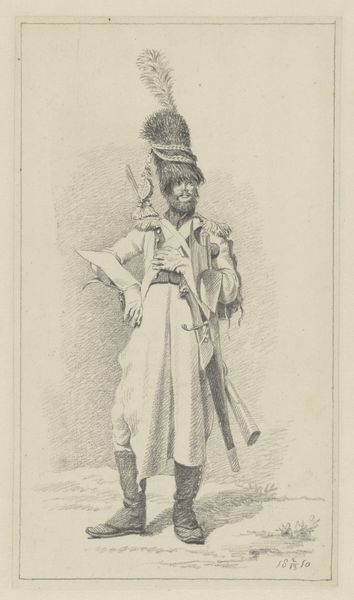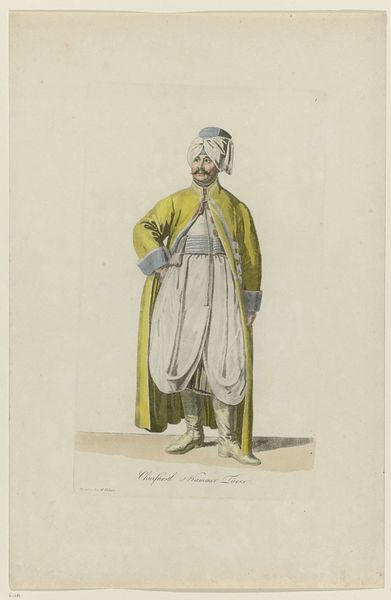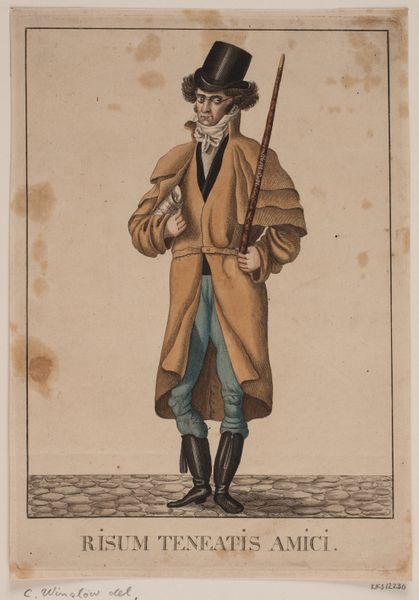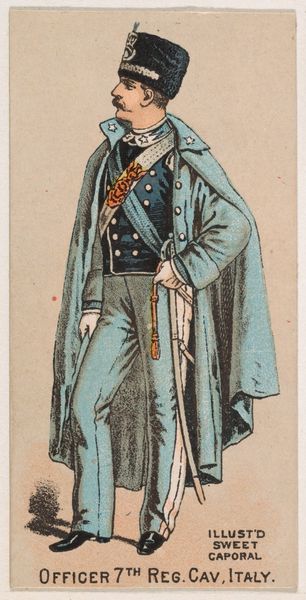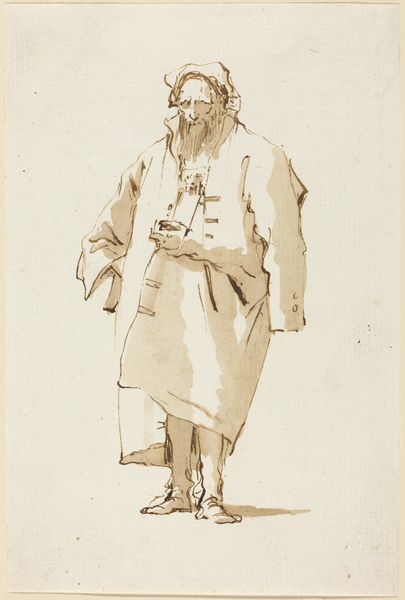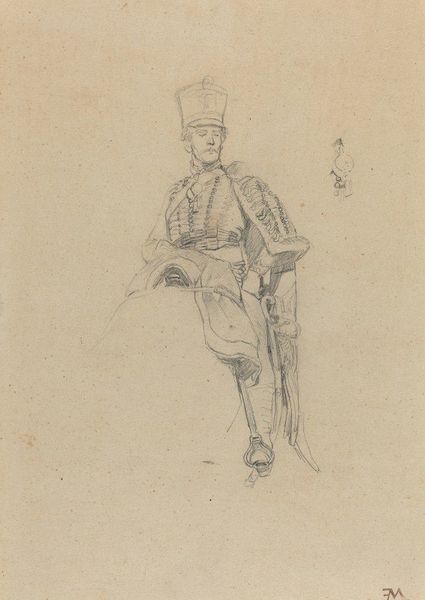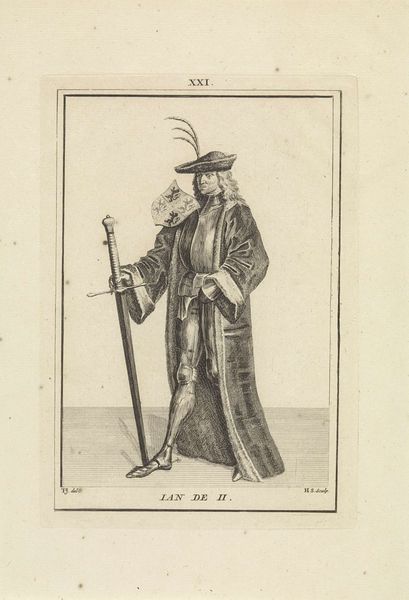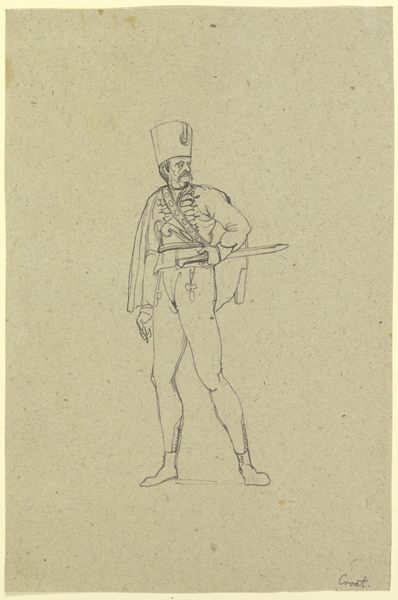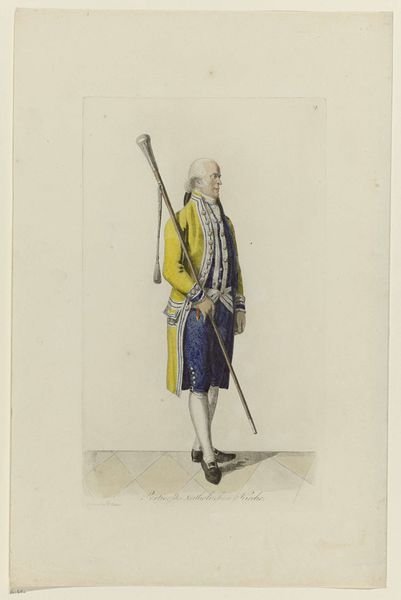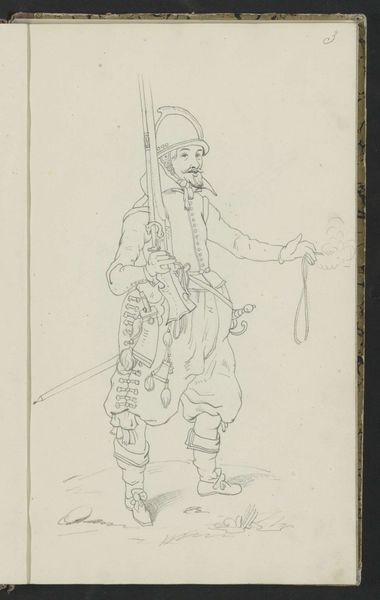
drawing, watercolor
#
portrait
#
drawing
#
imaginative character sketch
#
quirky sketch
#
cartoon sketch
#
personal sketchbook
#
watercolor
#
idea generation sketch
#
romanticism
#
sketchbook drawing
#
watercolour illustration
#
storyboard and sketchbook work
#
cartoon carciture
#
sketchbook art
Dimensions: height 121 mm, width 193 mm
Copyright: Rijks Museum: Open Domain
Curator: This work is Auguste Raffet’s “Uniformstudie,” or “Uniform Study,” rendered in 1827 and housed here at the Rijksmuseum. It’s a watercolor drawing. What strikes you about it? Editor: It has the quality of a half-remembered dream, or a caricature born of a late-night tavern conversation. There’s something almost absurd in the way the uniform seems to swallow the figure whole. Curator: The piece reflects the Romantic era’s fascination with both the individual and the sweeping societal shifts that were characteristic of the time. Here we see an echo of the Napoleonic era but in a style that leans away from the formal rigidity of earlier military portraiture. Editor: Absolutely. The exaggerated proportions, the somewhat sketchy rendering… It disrupts any heroic narrative, right? Who *is* this man inside the uniform? What power structures does he participate in, and perhaps more importantly, which ones oppress him? We see hints of these themes here. Curator: The very act of sketching, of making preliminary studies, became quite popular at this moment. Creating an art for a wider public. Before photography, it served as visual document for the popular consumption. Editor: This challenges the grand narratives of state power. Raffet presents us not with a celebration of martial prowess, but a much more human and questioning study. The slightly awkward pose. The disproportionate hat, that looms like an anvil. It becomes less about glorifying empire and more about probing the identity – and the anxieties – of those who served it. It reminds us that uniforms can both conceal and reveal. Curator: The rise of printmaking during the 19th century also helped spread this style. It gave images greater circulation in French society, as art became enmeshed in revolutionary ideas of politics and identity. Editor: Exactly. It's through these small gestures that we find resonance today. Curator: Well, by putting this work within its history but relating its importance today hopefully, it deepens people's understanding. Editor: I agree. It moves us beyond seeing it as merely a historical document and invites us to see it as an open ended investigation into the human condition.
Comments
No comments
Be the first to comment and join the conversation on the ultimate creative platform.
